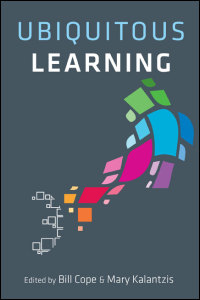 |
| From
http://edtechweb.wordpress.com /2010/11/23/week-12-mobile-wireless-and-ubiquitous-learning/ |
Then, more as happenstance than purposeful, I came across Wright and Parchoma (2011), who helped bring a lot of my past thinking into perspective.
If you are in the process of doing mobile learning research, it would be worth your time to glace over this article. They clearly articulate the various "discourses" found in mobile learning research in their literature review of the topic. Their conclusion, which parallels much of what I have considered, has to do with the notion that researchers in this vain should be focusing on the "authentic and informal contexts" (p. 247) where learning is taking place on mobile devices voluntarily ("by choice") instead of "by design" (p. 256). They mention looking more towards situated learning principles a la Lava and Wenger.
Within the context of education technology in general, I am happy to read such a piece. Namely, I enjoy it when writers refer to research and theory that I have read and thought about, but only understood the theory from the abstract or surface level.
BTW - this article was read and annotated on an iPad using the iAnnotate app.
Wright, S. & Parchoma, G. (2011). Technologies for learning? An actor-network theory critique of
‘affordances’ in research on mobile learning. Research in Learning Technology, 19(3), 247-258. Retrieved from http://www.researchinlearningtechnology.net/index.php/rlt/article/view/17113




